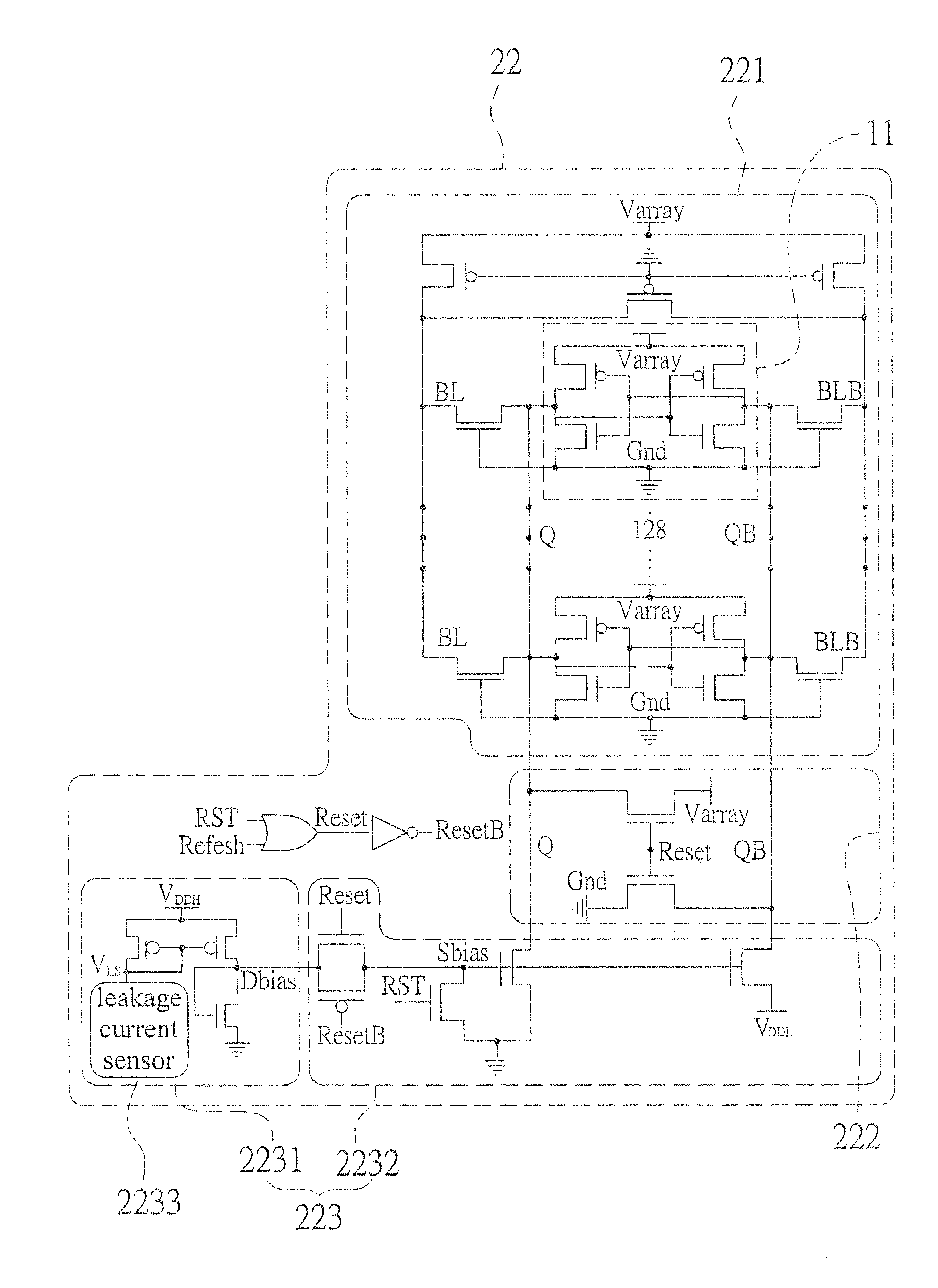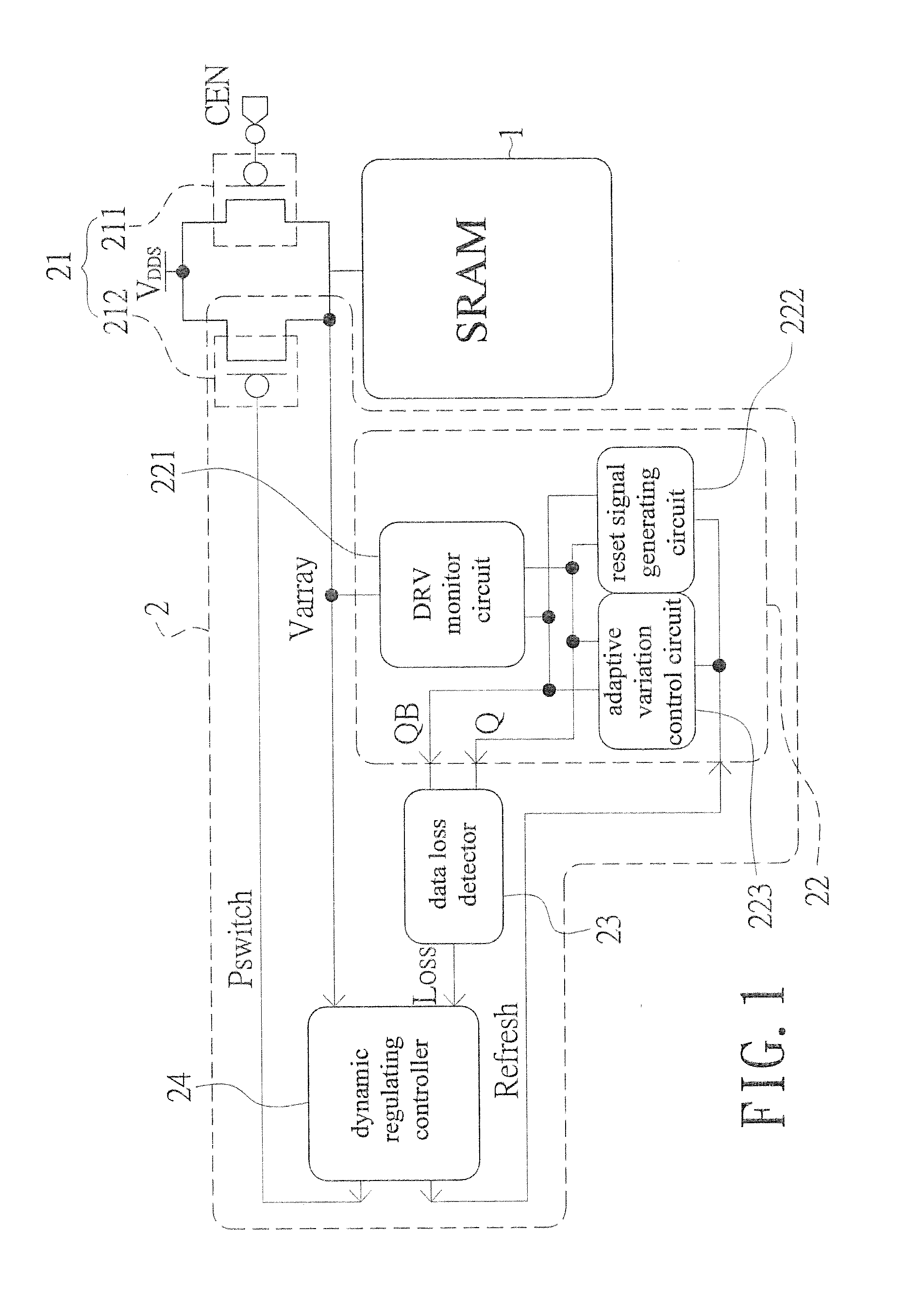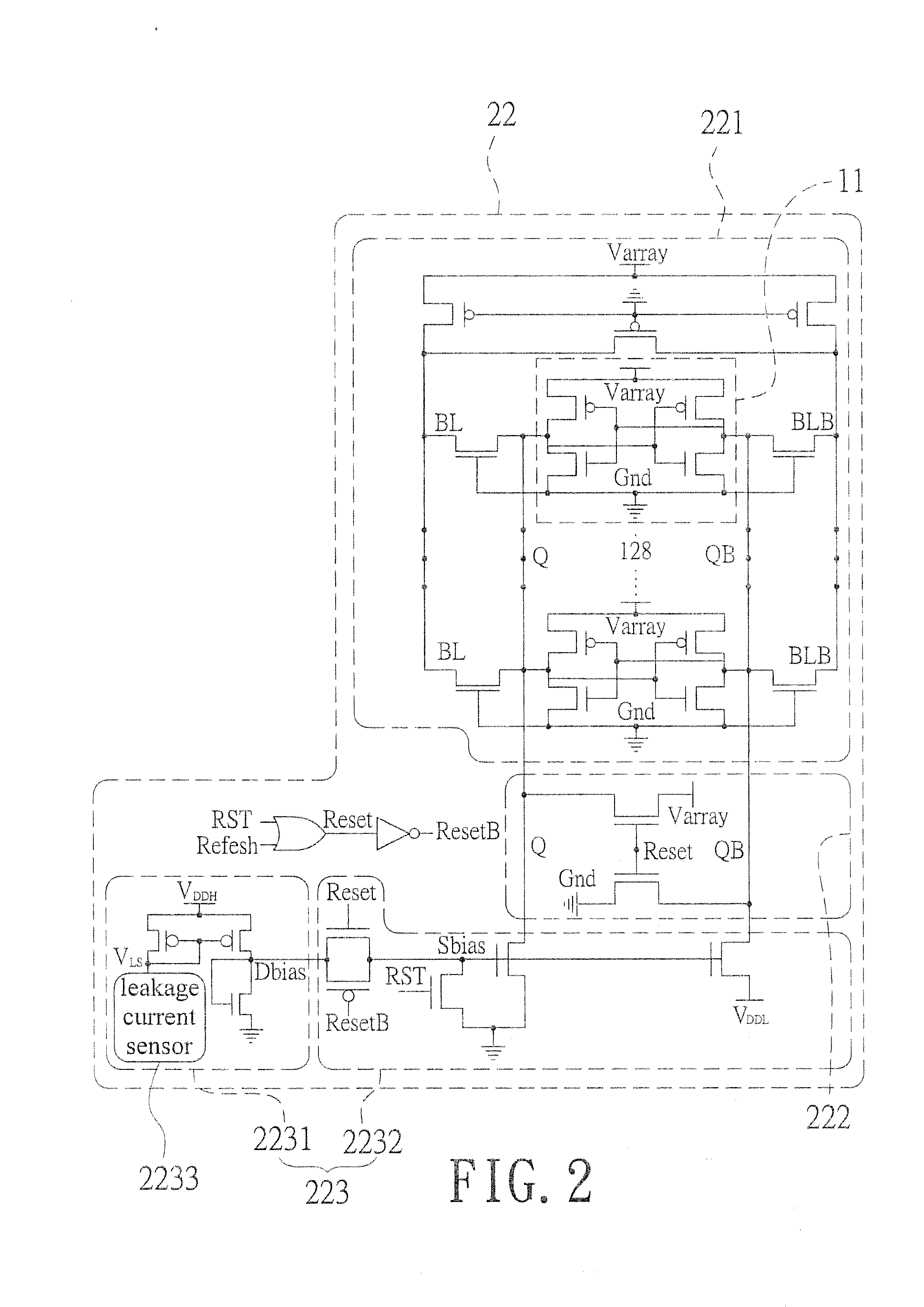Adaptive data-retention-voltage regulating system for SRAM
a data retention and voltage regulation technology, applied in the field of adaptive data retention voltage regulation system for static random access memory, can solve the problems of low static power dissipation of sram, no way to learn all the conditions of the chip, and the voltage scaling mechanism and leakage power reduction. achieve the effect of high static power dissipation of the sram
- Summary
- Abstract
- Description
- Claims
- Application Information
AI Technical Summary
Benefits of technology
Problems solved by technology
Method used
Image
Examples
Embodiment Construction
[0021]Refer to FIG. 1, an adaptive data-retention-voltage regulating system for SRAMs according to the present invention includes a power supply unit 21, a data-retention-voltage (DRV) monitor cell 22, a data loss detector 23, and a dynamic regulating controller 24.
[0022]The power supply unit 21 consists of a primary power transistor 211 and a secondary power transistor 212 connected to each other for voltage supply of SRAM 1. The size of the secondary power transistor 212 is no more than that of the primary power transistor 211. In an embodiment, the primary power transistor 211 and the secondary power transistor 212 can be PMOS transistors. The secondary power transistor 212 is turned off at the active mode. The secondary power transistor 212 is turned on while at the standby mode and dynamic regulation is required.
[0023]The DRV monitor cell 22 is used to monitor Static Noise Margin (SNM) of the SRAM 1 and is composed of a DRV monitor circuit 221 mounted with a plurality of memory...
PUM
 Login to View More
Login to View More Abstract
Description
Claims
Application Information
 Login to View More
Login to View More - R&D
- Intellectual Property
- Life Sciences
- Materials
- Tech Scout
- Unparalleled Data Quality
- Higher Quality Content
- 60% Fewer Hallucinations
Browse by: Latest US Patents, China's latest patents, Technical Efficacy Thesaurus, Application Domain, Technology Topic, Popular Technical Reports.
© 2025 PatSnap. All rights reserved.Legal|Privacy policy|Modern Slavery Act Transparency Statement|Sitemap|About US| Contact US: help@patsnap.com



